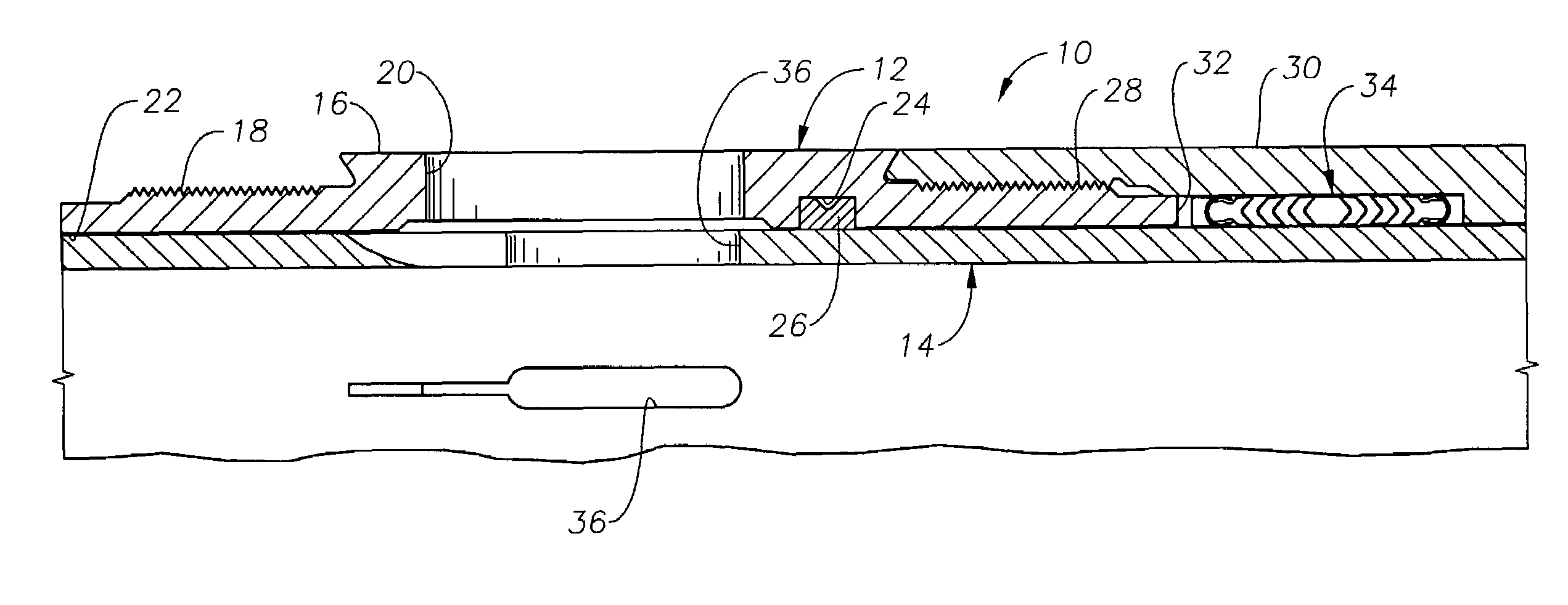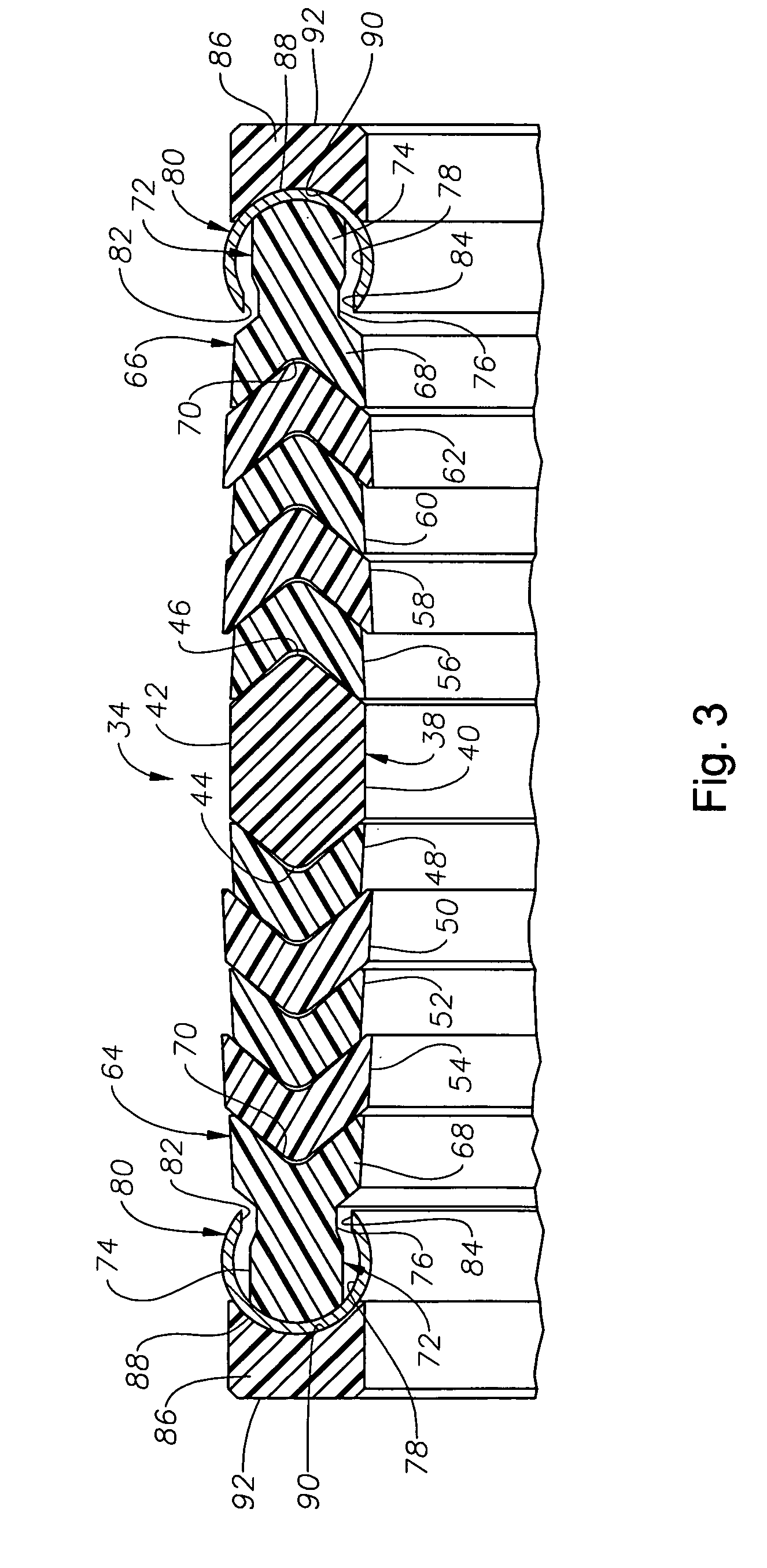Metal-to-metal non-elastomeric seal stack
a non-elastomeric, metal-to-metal technology, applied in sealing/packing, mechanical equipment, borehole/well accessories, etc., can solve the problems of degrading the seal, increasing the pressure and temperature of the seal, and imposing the use limits of sliding sleeve devices at these lower depths, etc., to achieve greater temperature and pressure, greater operational life, and more robust
- Summary
- Abstract
- Description
- Claims
- Application Information
AI Technical Summary
Benefits of technology
Problems solved by technology
Method used
Image
Examples
Embodiment Construction
[0017]FIGS. 1 and 2 illustrate an exemplary sliding sleeve valve 10. The sleeve valve 10 includes a tubular outer housing 12 and an inner sleeve member 14 that is axially movable with respect to the outer housing 12 between open, circulating and closed positions, as is known in the art. The outer housing 12 includes an upper sub 16 having a threaded end portion 18 for interconnection with other portions of a production string (not shown) in a manner known in the art. A lateral fluid flow port 20 is disposed through the upper sub 16 to allow fluid communication between the exterior of the upper sub 16 and the axial flowbore 22 that is defined therewithin. Below the flow port 20 is an internal annular recess 24, which retains a diffuser ring 26 therein. The diffuser ring 26 acts to slow fluid flow rate into or out of the valve 10 during opening or closing to help prevent damage to the seal assembly 34. The diffuser ring 26 is preferably of the type described in U.S. Pat. No. 5,156,220...
PUM
 Login to View More
Login to View More Abstract
Description
Claims
Application Information
 Login to View More
Login to View More - R&D
- Intellectual Property
- Life Sciences
- Materials
- Tech Scout
- Unparalleled Data Quality
- Higher Quality Content
- 60% Fewer Hallucinations
Browse by: Latest US Patents, China's latest patents, Technical Efficacy Thesaurus, Application Domain, Technology Topic, Popular Technical Reports.
© 2025 PatSnap. All rights reserved.Legal|Privacy policy|Modern Slavery Act Transparency Statement|Sitemap|About US| Contact US: help@patsnap.com



